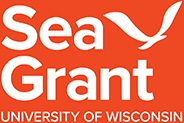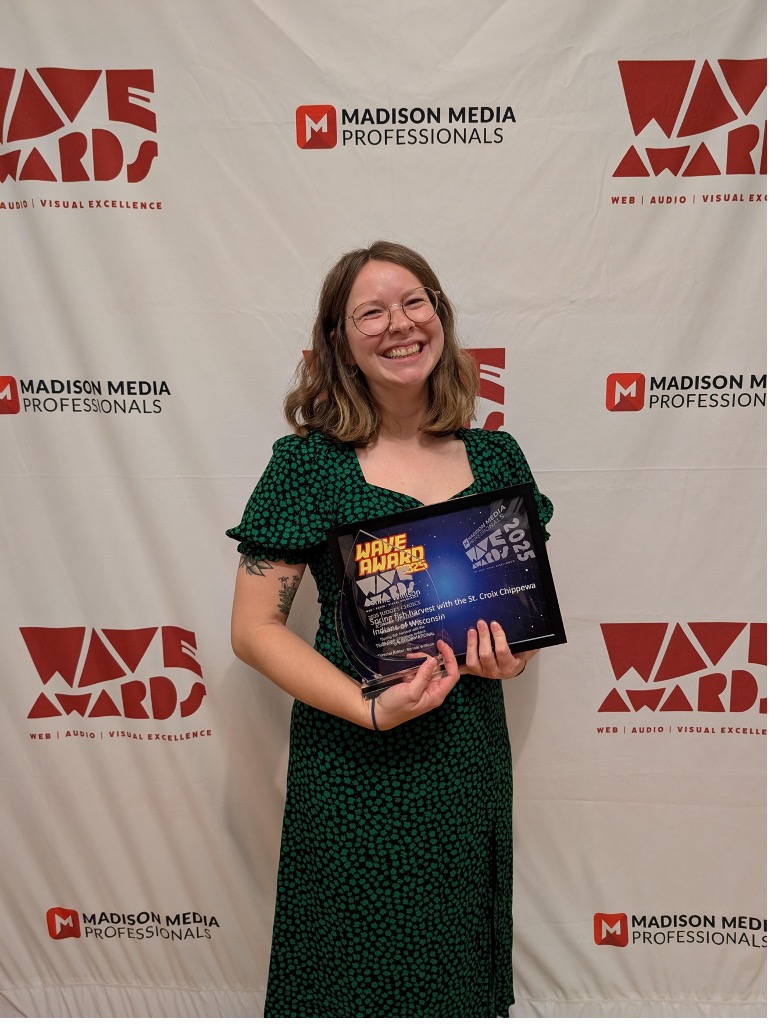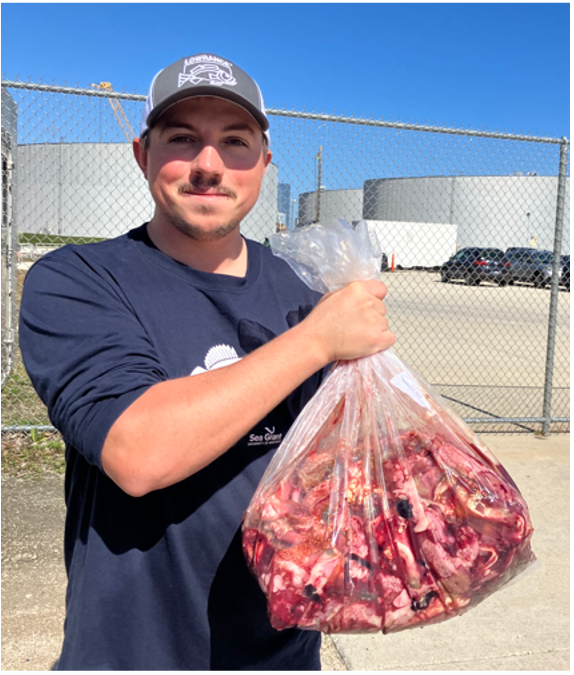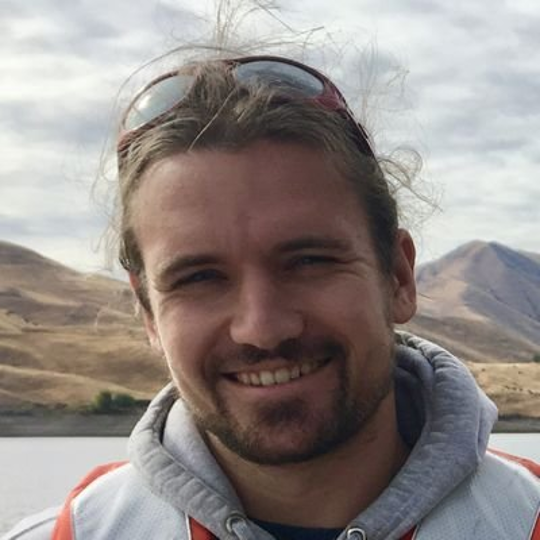When it comes to art, perhaps you feel like Wisconsin Sea Grant’s invasive species outreach specialist, Tim Campbell.
“My background is in science. I feel like I’ve always been a science-logic person,” he said. “I don’t make any art. I don’t feel like I have any artistic bones in my body.”

Astrid Hooper Lofton’s big, stuffed biocontrol beetle enjoys some sun. Photo: Astrid Hooper Lofton
But are science and art really that different, or can they be used to achieve common goals? This is one of the core questions driving the latest season of Introduced, Wisconsin Sea Grant’s aquatic invasive species podcast. Co-hosts Bonnie Willison and Jenna Mertz explore the relationship between science and art by talking with artists weaving AIS — both figuratively and literally — into their work.
“This season, we wanted to bring listeners stories about community and communication, and art bridges both those themes,” said Willison. “It’s really good at grabbing people’s interest who may otherwise never have thought about AIS before. It’s also a lot of fun, and the artists we interviewed are incredibly talented.”
This season features three artists creating AIS-inspired work:
- Astrid Hooper Lofton, a student who sews a giant, stuffed, “huggable” biocontrol beetle;
- Daniel Murray, the mastermind behind Deep Lake Future, a one-of-a-kind immersive art exhibit in Milwaukee; and
- Kim Boustead, an artist whose stalwart pursuit of the perfect fish leather nearly ended with a jug of urine and some very (very!) bad smells.
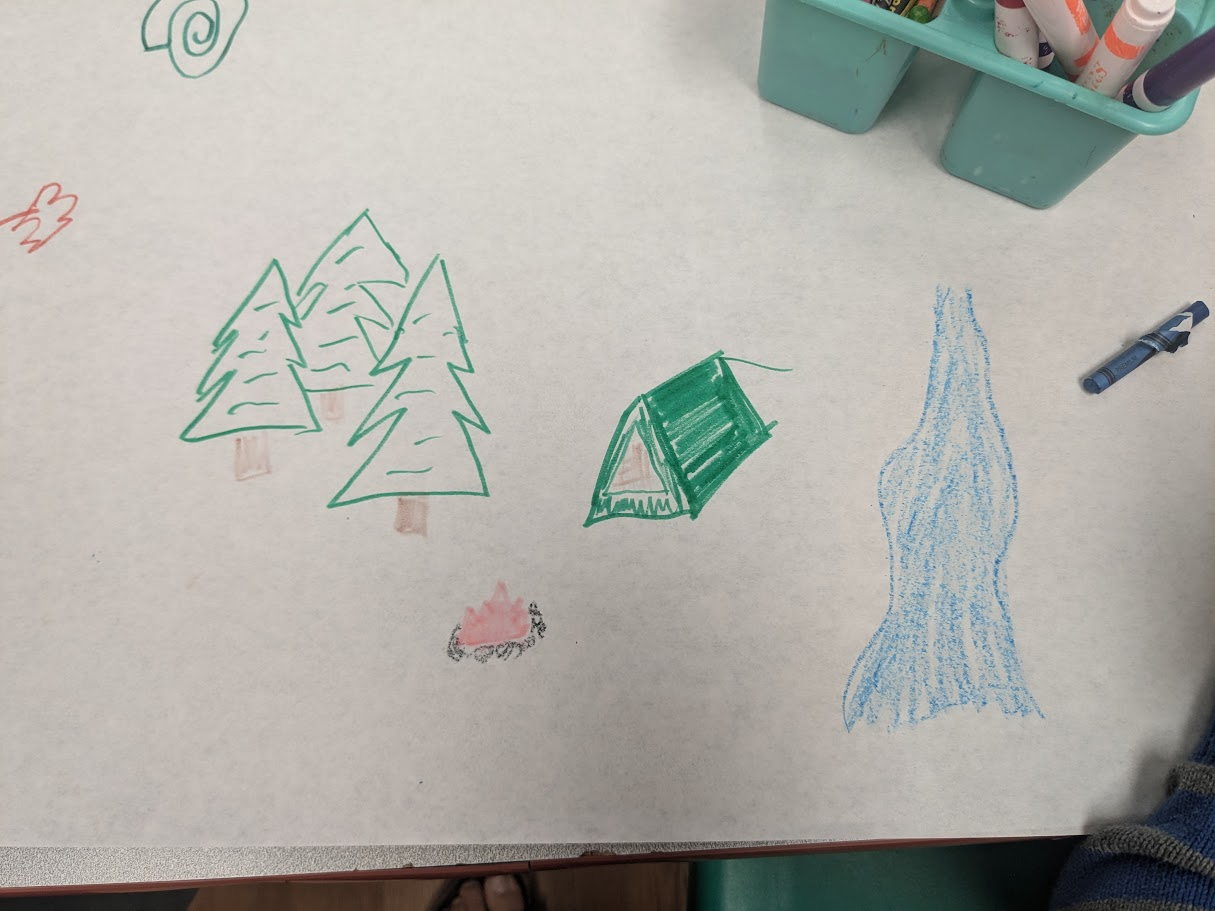
Tim Campbell’s art (Crayons, marker; circa 2024). Credit: Tim Campbell
Campbell also appears on the podcast as a guest host and resident left-brainer. In addition to showcasing his own artistic endeavors, he reflects on how scientists can lean on art to better connect with audiences.
“We all think people are rational beings that collect data and facts — they weigh the pros and cons and make the decision that’s best for them. But there’s these things called emotions and feelings that get in the way and influence decision making. And I probably can’t make anyone feel anything with just data alone, except maybe bored,” laughed Campbell.
Art alongside science, however, can cast a wider net. Those not captivated by spreadsheets might gravitate towards a colorful mural or sculpture and learn something new about the issues impacting their community.
“And when everyone is engaged, good things can happen for invasive species management and the Great Lakes,” said Campbell.
Listen to the current season on our website or wherever you get your podcasts.
